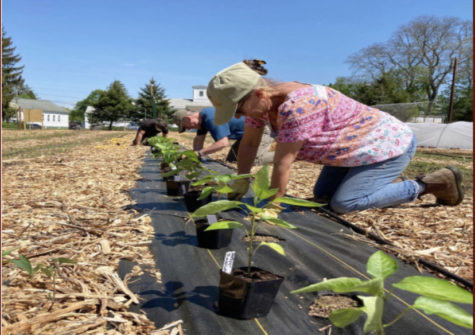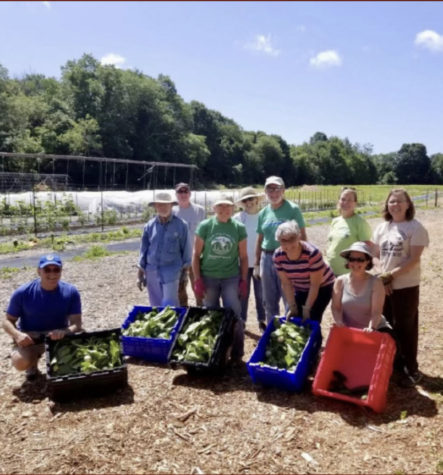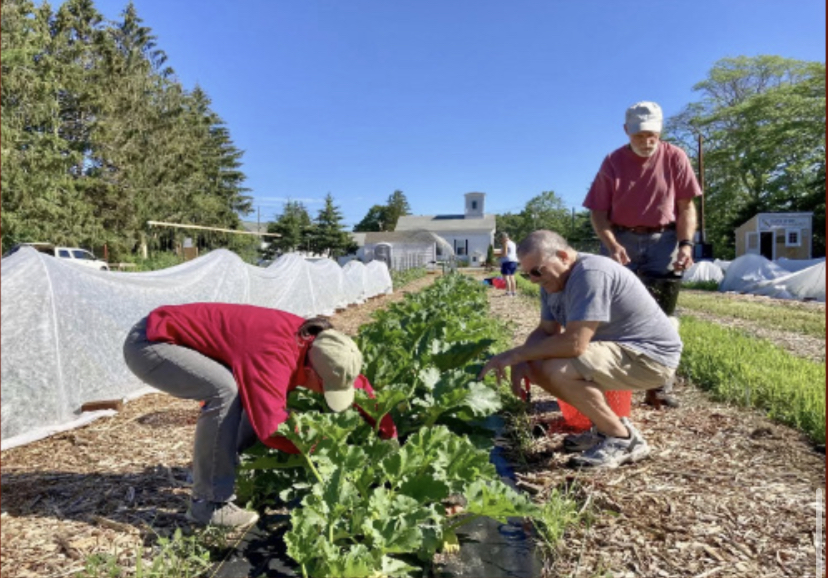Giving Garden Perseveres Through Drought
Local community garden grows over 5000 lbs of food to donate
“This year has shown that our volunteers, board, and community are ready for any challenge nature can throw at us,” director of the EL Giving Garden Board John Holtz said.
The EL Giving Garden has grown and distributed over 900 more lbs of food than last year’s summer harvest despite severe drought. All of the produce grown and harvested was handed off to the Shoreline Soup Kitchen and delivered to communities throughout Connecticut that struggle with food insecurity, to ensure community members have access to fresh, nutritious produce.
“Drought is incredibly challenging for us. Squirrels were so desperate for water they started eating the tomatoes,” Mr. Holtz said.
 From planting seeds in March to harvesting the last fall crops in November, the garden operates almost entirely off of volunteers. Community members, most of whom are over 60 years old, put in hours of work to tend to the soil and pull the cover crops in late spring before spending their summertime at the garden tending to the crops, pulling weeds and keeping pests out.
From planting seeds in March to harvesting the last fall crops in November, the garden operates almost entirely off of volunteers. Community members, most of whom are over 60 years old, put in hours of work to tend to the soil and pull the cover crops in late spring before spending their summertime at the garden tending to the crops, pulling weeds and keeping pests out.
“I hope more students take the opportunity to help out. Learning how the garden works and what its purpose is was interesting, and planting potatoes with my friends was really fun,” sophomore volunteer Candy Xu said.
Students under 18 can volunteer at the garden through service clubs, like the Leo Club, through which about 10 students last spring spent a May afternoon planting seeds and preparing the garden for summer.
“Everything we do here is calculated to be as sustainable and efficient as possible. Because we don’t use any pesticides, cover crops like rye are put between rows of different plants to give insects something to eat besides the crops and stop them from spreading,” Mr. Holtz said.
pesticides, cover crops like rye are put between rows of different plants to give insects something to eat besides the crops and stop them from spreading,” Mr. Holtz said.
Since the garden opened in 2020, many improvements and updates have been made through town, church, and Board of Education donations, including a new shed and a John Deere tractor.
Half of the cost of the garden’s irrigation system was donated as well. The Wifi-controlled drip irrigation system is 90 percent efficient, meaning only 10 percent of the water used doesn’t make it to the crops.
“My goal for next year is to focus more on starting an education campaign now that we have ironed out the kinks of balancing volunteer positions and have gotten two seasons of experience. We’re really excited to teach the community how to avoid the pitfalls of modern farming,” Mr. Holtz said.
Your donation will support the student journalists of East Lyme High School. Your contribution will allow us to purchase equipment and cover our annual website hosting costs.

